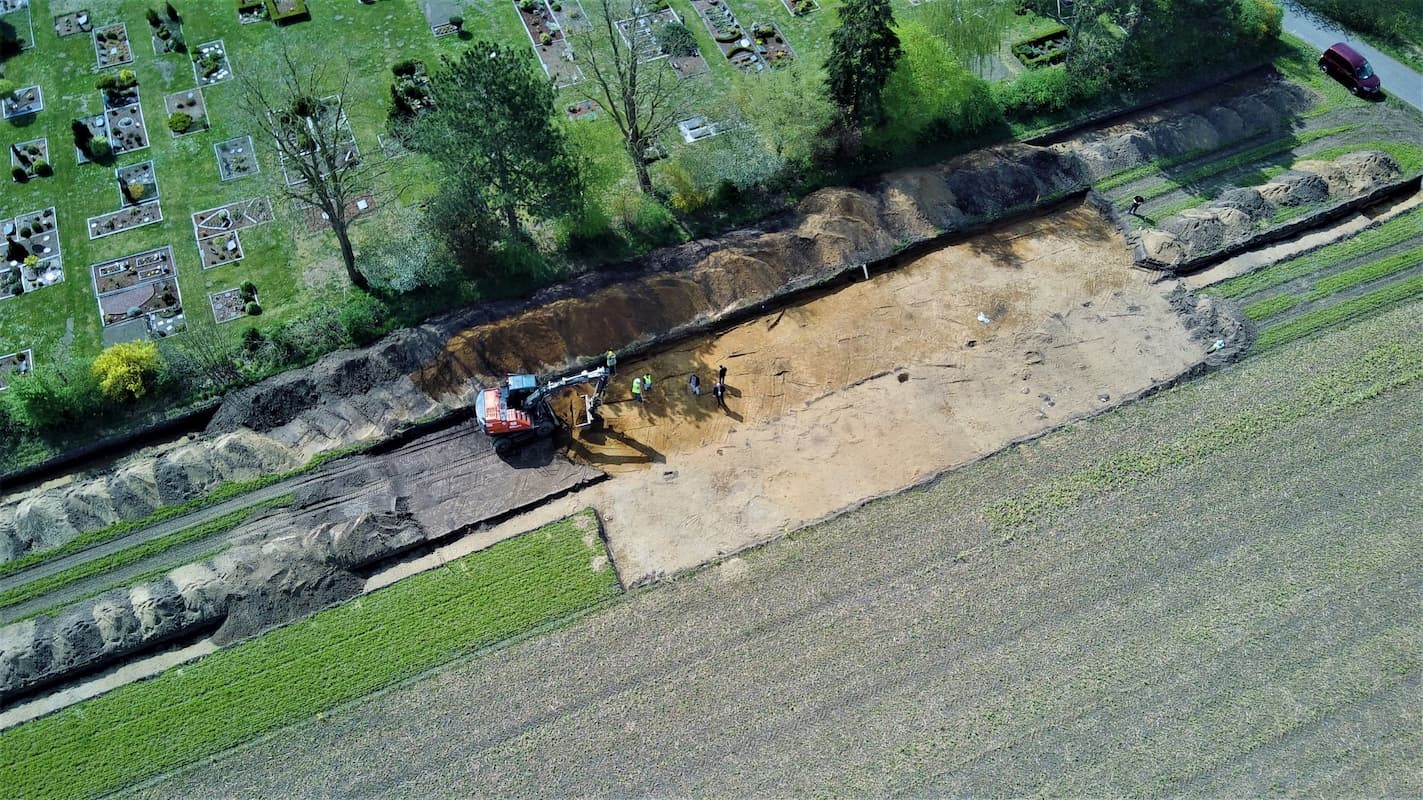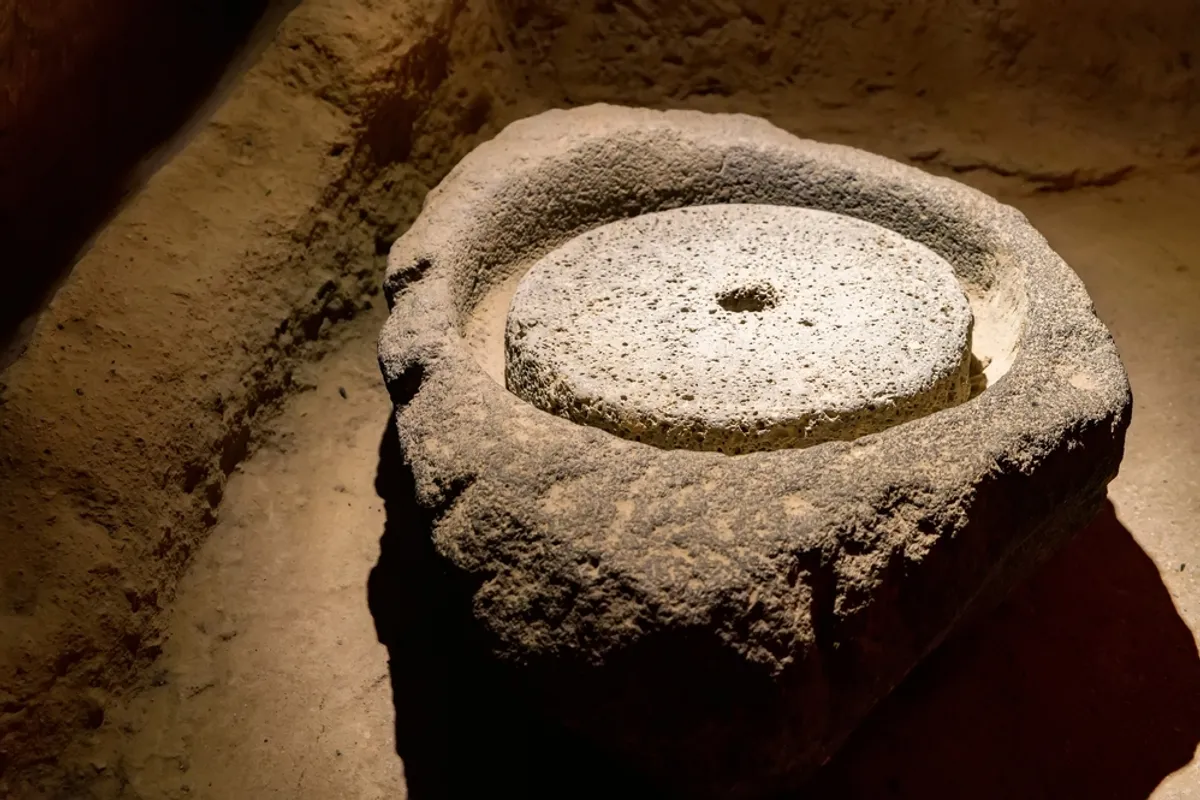Drone footage captures the excavation area at Espelkamp’s community cemetery, located at the northwestern edge of Frotheim village. Photo: P. Metzner / Stadt Espelkamp
What began as a routine cemetery expansion turned into a remarkable archaeological discovery: a 3,000-year-old Bronze Age burial site complete with cremation remains. Specialists called in to investigate soon realized they were standing on an ancient cemetery dating back millennia.
🔍 A Stunning Discovery Beneath Modern Grounds
The find took place during expansion work at the Frotheim community cemetery in Espelkamp, Germany. Excavations revealed urn burials, trenches filled with cremated remains, and scattered ashes alongside remnants of ancient funeral pyres. Construction work was immediately halted, and experts from the Regional Association of Westphalia-Lippe (LWL) were brought in.
🏺 A 3,000-Year-Old Cemetery Unearthed
According to Sebastian Düvel, scientific advisor for LWL, the area was used as a burial ground as far back as the Late Bronze Age, possibly extending into the Iron Age. This wasn’t the first sign of ancient activity—similar urns had previously been found during grave construction in 1956 and 1967.
The current excavation, led by archaeologist Geoff Carver in collaboration with LWL, identified 41 features in a single cremation burial field. These included:
13 confirmed urn burials
“Nests” containing cremated bone fragments
Graves with scattered ash and traces of funeral pyres
🔥 Funeral Customs of the Bronze Age
Cremation was a common practice during this period. As Dr. Sven Spiong, head of LWL’s archaeology department in Bielefeld, explains, the Late Bronze Age saw a major cultural shift in burial traditions: people began cremating their dead— a practice that remained dominant in Eastern Westphalia until the Late Middle Ages, with few exceptions.
⌛ Dating Challenges
Determining the precise age of these graves relies largely on analyzing the burial vessels, some of which date to around 1000 BCE. Since some of these urns and associated grave goods were removed intact, researchers can only gradually determine individual cremation dates.
In the lab, the finds will undergo careful cleaning and reconstruction. Specialists also hope to uncover grave goods such as beads, needles, or knives, which could offer deeper insights into the customs and material culture of the time.
🧬 Technology Meets Tradition
Modern tools are playing a big role in the study. One example: a 3D model of one of the 3,000-year-old urns, created using digital imaging techniques.
Photo: Denkmal 3D / G. Carver
Interestingly, the team believes that the more recent cremation graves without urns—which still contain pyre remains—may date closer to the turn of the Common Era. These could signal a cultural shift in beliefs about death and the afterlife.
Because many of these graves lack clear grave goods, scientists will rely on radiocarbon dating (C-14) to determine their age.
🗺 A Sacred Bronze Age Landscape
The current excavation site appears to be just a small fragment of a much larger sacred burial area. Archaeologists from LWL had already excavated an expansive cemetery nearby in the 1980s, just meters to the northwest.
Typically, such "burial zones" began with Bronze Age burial mounds (tumuli). Over generations, communities would continue to bury their dead around these sacred markers.
So far, no burial mound has been found in this round of excavations. Still, researchers suspect one is nearby—supported by comparisons to similar burial landscapes in Minden-Päpinghausen and Petershagen-Windheim, previously studied by other archaeological teams.
This accidental find not only reveals an ancient community’s final resting place but opens a window into how our ancestors viewed life, death, and legacy—offering fresh layers to our understanding of Europe’s prehistoric past.







